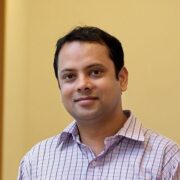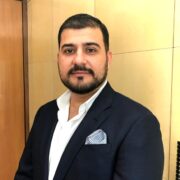

GMAT is the Graduate Management Entrance Test. The GMAT exam is used by more than 2,100 institutions and universities around the world. India has 39 test centers for GMAT across 34 cities. The candidate can choose to take the exam whenever they wish. The constraints on taking the test as of 2018 are:
GMAT tests the students through analytical writing assessment, integrated reasoning , quantitative ability and verbal reading and comprehension.
Test Score
The analytical writing assessment is scored from 0 to 6, integrated reasoning is scored from 1 to 8, and verbal and quant separately have a scaled score from 0 to 60. The cumulative score for verbal and quant is between 200 and 800 (This is the score that students refer to the most).
Also, the students are given a percentile ranking in both the Verbal and Quant sections. This percentile corresponds to the percentage of people whose score is lower than your score. If you are at the 90th percentile, this means you scored better than 90% of the population taking the exam. This percentile is based on the last three years of GMAT scoring. And while both your Verbal and Quant scores are combined to produce an overall score, the average for each section is different. This is because GMAT takers tend to get a higher score in the Quant section, so the average is higher.
Format of GMAT
The students can attempt the sections in the order of their choice. The students have two breaks of 8 minutes each. When the break comes depends on the order in which the student has decided to appear for the test. For example, if the student appears for the test in the classical order, that is,
In this classic order, the two breaks that the students get are- first break for 8 minutes, after section 1) and section 2) and second break for 8 minutes, after section 3).
These breaks are long enough only for going to the bathroom or having a quick snack. So the student should be careful to keep the time limit of the break in mind.
FAQs about GMAT
Q1: How much does GMAT cost?
A1: The minimum fee for GMAT in India is INR 18,000, to reserve a seat at the test center.
Q2: How to register for GMAT?
A2: The students can register for GMAT through mail, phone or online. The most preferred way to register is through online because for the exact same transactions on phone an additional INR 700/- are charged.
For online registration the steps are as follows:
Q3: Can a student reschedule GMAT?
A3: If you need to reschedule your test, you can do so for a fee. If you reschedule your test more than seven days before your test date, you can do so for an additional $50. If you wait until seven or fewer days before, then you won’t get any discount and will have to pay the entire $250 registration fee again.
Q4: What is the eligibility for GMAT?
A4: There are no set eligibility criteria for the GMAT exam. But, since GMAT is usually helpful in applying for masters or post graduate degree, therefore the candidates are usually required to at least have an undergraduate degree. Besides this, different B-schools have different criteria set for admission.
You might like the following as well.


He is an entrepreneur, a mentor, career counselor, an author and so much more. Alumni of reputed institutes like IIM-Bangalore, Delhi Technical University and among the top 20 of his batch, Mr. Vivek Gupta has almost 20 years of experience.

Satyam is an alumnus of IIM Bangalore ( 2005) and IIT Delhi 2003. He was first runner up at Lead India , an initiative by Times of India to find future impact leaders of India. After a 4 year stint with American Express, Satyam joined Michael and Susal Dell Foundation to take his passion to profession.

Having graduated from Kurukshetra University with a bachelor's degree, she is well-versed in digital marketing. Over the past two years, she has been actively handling and managing various academic responsibilities.

Sameer Mahandru is an alumnus of IIM Bangalore (2004). He has worked with companies like Hindustan Lever, Asian Paints, SABMiller in the Sales & Marketing function for more than 6 years prior to starting operations at Indospirit. Currently he is MD and Chairman of Indospirit Distribution Limited.
Best thing about Vivek Gupta Sir is his selfless counselling. As I am already a BSC/ MSC, he suggested me to go to Philippines as I was able to get straight admission into MD and this finishes my entire course in 4 years flat. In any other country, it would have taken by 5.5-6 years. Ms Kanimojhi in Chennai office of GKWorks was equally supportive in coordination regarding documents, departure and all other formalities.
We live 100 Km’s away from Varanasi. The internet connection in our town is very weak and my parents are not that educated. For us, understanding the word RTGS was also very difficult. Thanks to Amit Pandey Sir, who is Gkworks Varanasi incharge, he helped us to do all small things. Going with us to get forex to helping us doing RTGS for fee payment, he was always there with us. He only helped us to apply for passport online and went with us to passport office Varanasi. Such support at ground level was provided by GKworks team both in Varanasi and Delhi.
My parents were not very comfortable to send me abroad especially my mother as I am the only son of my parents. I really wanted to become a doctor and thus approached Hemant Mishra Sir, director of Bareilly branch of GKWorks. He went out of his way to convince my mother. He would have come 5 times to my home, invited us to his office and home 10 times before my mother was finally convinced. It is only due to Hemant Sir in Bareilly that I am pursuing my course today. I wish GKworks and especially Bareilly branch all the very best to help many more students for their life dreams.